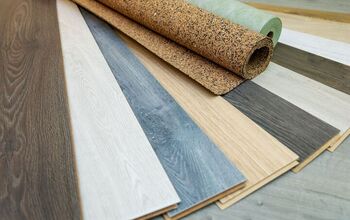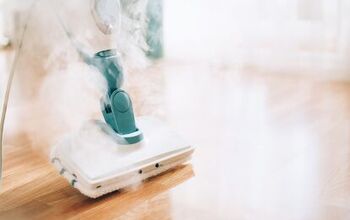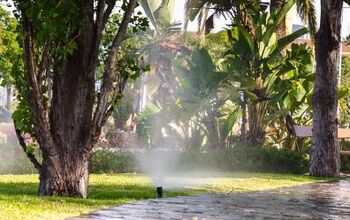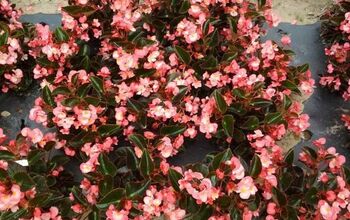Can You Use Bleach On Laminate Floors?

The smell of a clean home after the floors are freshly mopped is the smell of a job well done. Cleaning your laminate floors is a task best done on a regular basis. This helps keep your home clean and also preserves the quality of the laminate floors themselves.
But just as it is important to clean your floors regularly, it is also critical you use the right cleaning products. This might have you wondering if you can use bleach to clean your laminate floors.
It is best to avoid using bleach on laminate floors. Bleach is a harsh chemical that can damage and eat away at the finish on your laminate floor. This can cause damage and discoloration over time. Some laminate floors can withstand diluted bleach solutions, but make sure you confirm with the manufacturer before trying this. Consider using effective but less harmful floor cleaners on your laminate floors.
Having clean laminate floors is important. This does not mean that you need to use bleach to keep them clean. In fact, using bleach might not be necessary at all. Sometimes this harsh chemical can do more harm than good.
In order to understand whether or not you should reach for the bleach next time you mop your laminate floors, you should know the reasons why it might not be a good idea.
Can I Use Bleach To Clean My Laminate Floors?
When you think of great cleaning products, bleach is likely one of the first ones that come to mind. It is in almost every household cleaning supply closet. So, can you clean laminate floors with it? The answer is that cleaning laminate floors with bleach is a risky gamble that you should avoid if possible.
Bleach can eat away at your floor’s finish. This can cause the floor to lose its shine, making it look drab, dated, and old. When a floor loses its finish, it also loses a layer of protection. Therefore, it could reduce the longevity of the floor, which is the last thing you want.
Some laminate floor manufacturers say it is safe to use diluted bleach on their floor products. But before you do this, consider the reasons why it is not a great idea.
Reasons To Reconsider Using Bleach On Laminate Floors
Bleach Is A Harsh Chemical
There are all sorts of great uses for bleach. It is great at making your white clothes whiter, and it is a great disinfectant. These days, killing bacteria feels more important than ever, so it is natural to want to add bleach to as much of our daily cleaning regimen as possible.
Keep in mind, however, that bleach not only kills bacteria, but it can also harm surfaces. This chemical can damage your clothes, is harmful to pets, and can even mess up your floors.
Not All Laminate Floors Are The Same
Laminate is a man-made material. As such, the chemical makeup of each floor type is different. This means that while some laminate floors might not be easily damaged by bleach, others might be quite sensitive. If your laminate floor’s finish is sensitive to the chemicals within the bleach, in particular, sodium hydroxide, then the flooring will deteriorate. It can cause the floors to lose their shine. Bleach can make a floor look dull, and also make them more susceptible to water damage and other cosmetic issues.
Other Cleaning Products Might Be Better
One other reason to reconsider using bleach on laminate floors is the fact that there are so many fantastic cleaning products out there designed to clean laminate floors. These days, there are ample organic, natural and non-harmful chemical cleaners to use on your floors. They have great scents and highly effective ingredients that clean your floors and keep them healthy. Best of all, you can choose products that are safe for your family and good for the environment (and floors).
Tips To Remember When Using Bleach On Laminate Floors
Always Dilute The Bleach
If you confirm it is safe to use bleach on your specific laminate floors, make sure you dilute the bleach, and consider using bleach with another cleaner. Properly diluting bleach will make it much less harsh, and reduce the risk of it causing any damage to the floors or other surfaces.
The typical ratio to make a cleaning solution with bleach and water is one cup of bleach for every gallon of water.
Confirm It Is Safe On Your Specific Floors
Always make sure bleach, and any cleaning material for that matter, is safe to use on a surface before applying it. Check with the flooring manufacturer (if you know it) to confirm whether or not bleach will harm the laminate floor.
Always Rinse After With A Clean Mop And Water
Another crucial tip to remember when cleaning laminate floors with bleach is to always rinse and wipe them down with water after, or use a Swiffe r with warm water. The last thing you want is for the remnants of bleach to linger and dry on the floors. This is harmful and potentially toxic.
The Longer The Exposure, The Greater The Damage
Remember that the longer bleach is exposed to your laminate floors, the more likely it is that damage may occur. Therefore, if you do need to use bleach for some reason (like sanitation), make sure the bleach is diluted, applied, and quickly removed. Then use a clean mop with warm water, as discussed above. This limited exposure also reduces the likelihood to damage.
Final Recommendations For Using Bleach On Laminate Floors
It is best to avoid using bleach on laminate floors. While some laminate floor manufacturers say it is safe to use diluted bleach solutions, it is important to remember that bleach is a harsh chemical. Prolonged exposure to bleach can eat away at a laminate floor’s finish. This can reduce its longevity, ruin its shine and cause other cosmetic damage.
Related Guides:

Tom Gaffey is an expert writer who currently resides in Washington D.C. Tom has a passion for real estate and home improvement writing, as well as travel and lifestyle writing. He lived the last twelve years in Hawaii where he worked closely with luxury resorts and event planners, mastering his knowledge of aesthetics and luxury products. This is where he found his passion for home improvement and a keen interest in DIY projects. Currently, Tom resides in Washington D.C, and also working on his debut fiction novel.
More by Tom Gaffey



























